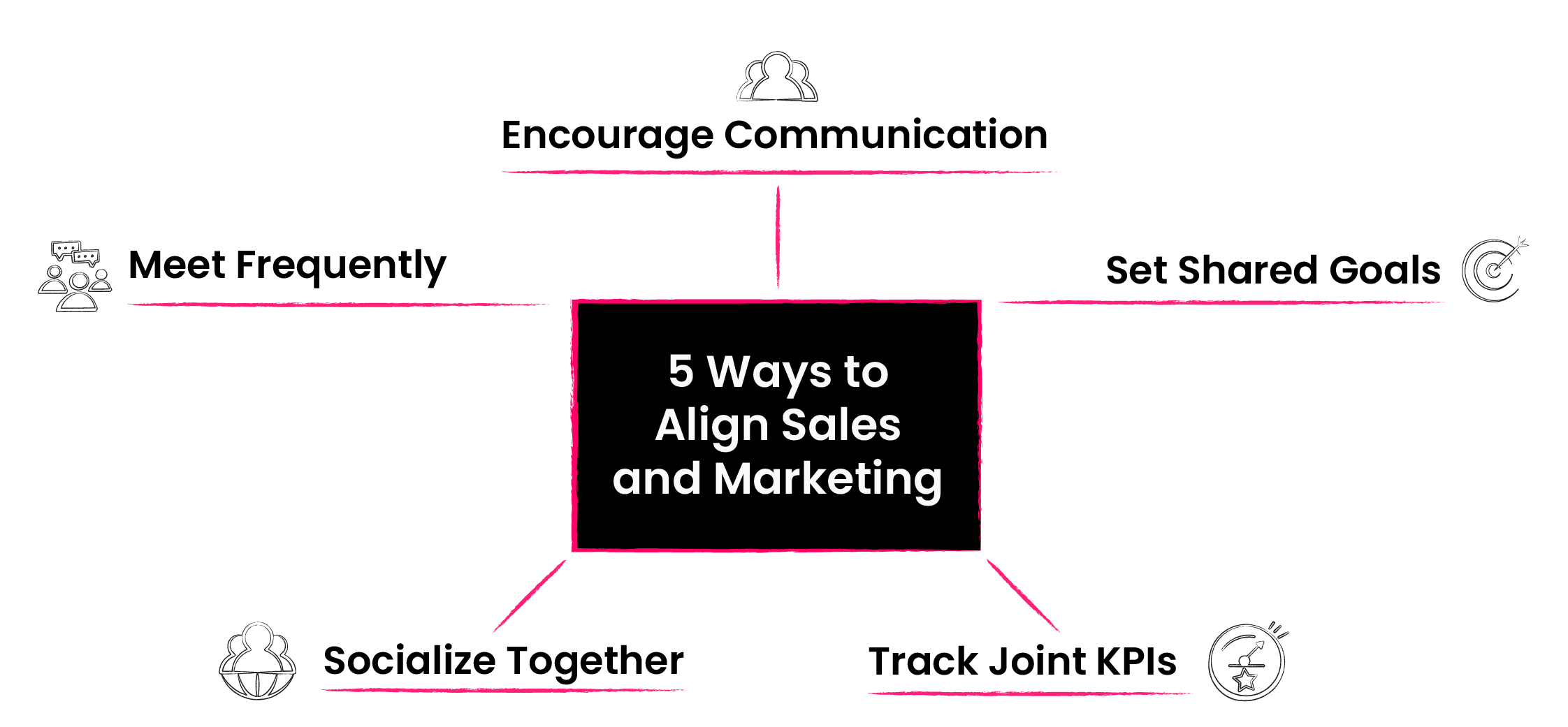Almost every business is familiar with the misalignment that can happen between sales and marketing teams. Research shows that 9 in 10 sales and marketing professionals say they are misaligned across strategy, content, process, and culture.
Sales and marketing departments communicating regularly is essential for the success of your business. Businesses that enable engagement across these two departments often see higher revenue than those that don’t.
This article will cover sales and marketing alignment, why your company needs it, and how you can improve it.
What Is Sales and Marketing Alignment?
Sales and marketing alignment, also known as smarketing, is an agreement between both teams to work with better communication, transparency, collaboration, and efficiency. The end goal is to deliver a seamless experience for prospects and customers, increase conversion rates, and, ultimately, increase revenue.
In the past, sales and marketing departments have developed independently of each other, using different systems. The alignment aims to break down the walls between sales and marketing and allow them to work together toward generating revenue.
Aligning your marketing and sales alignment will contribute to better demand generation results.

Benefits of Aligning Sales and Marketing
The alignment between sales and marketing teams is fundamental for any business. When it’s done right, the collaboration between these two teams can dramatically improve your customer's experience with your brand.
- Well-defined strategy - When sales and marketing teams are aligned, you have a clearer picture and a long-term plan for generating revenue.
- A better understanding of the customer - Sales and marketing teams are in charge of attracting, nurturing, and closing customers. So, when they work together, it’s easier to create accurate buyer personas and serve better the ideal customer.
- Provision of sales enablement resources - The marketing team is in charge of creating content that promotes your business and includes resources for the sales team. By aligning your marketing and sales team, the sales team can quickly access what your prospects are looking for.
- Better engagement between sales and marketing - When sales and marketing work separately, each team doesn’t pay attention to the other and executes its own activities. This results in redundant efforts and a confusing experience for the prospect.

5 Ways to Align Sales and Marketing
Aligning your sales and marketing teams might seem complicated and complex to implement at first. However, here are a few tips to help you start.

1. Meet Frequently
Whether weekly or monthly, you must set aside time for the two teams to meet. At these meetings, you can:
- Define common goals
- Outline strategy
- Review present, past, and current campaigns
- Discuss challenges you’re facing
- Talk about what each team can do better
- Discuss what the teams need from each other
For day-to-day communication, sales and marketing can use email, Slack, or other channels to stay in touch regularly.
2. Encourage Communication
Disagreements can be uncomfortable, but you also need them to grow. Many businesses function in an environment where teams are afraid to push back because of fear of confrontation or retaliation.
Your sales and marketing teams can be brought together by encouraging open communication and constructive criticism. By embracing these difficult conversations, you will ensure that both teams understand why certain decisions were made.
3. Set Shared Goals
One of the main reasons for the misalignment between sales and marketing teams is that they have different goals. You first need to make sure everyone is aware that you’re working towards the same goals. Next, make sure that both teams stop building strategies independently.
Sales and marketing teams should unite as a team to understand the position of the market, the buyers' needs and preferences, and how your solution can help them.
4. Track Joint KPIs
Even though your ultimate goal is conversions, the smarketing team needs to define key metrics that help measure the impact of your efforts. These could include website visits, newsletter signups, email open rates, or anything else that can indicate your consumer’s interest.
5. Socialize Together
Whether it’s a conference, event, or a drink after work, try to get to know each other as people in a more casual setting.
A big part of aligning your sales and marketing teams is creating a pleasant atmosphere and easy conversations between the members. This also builds trust among them and cultivates a feeling that they can lean on each other for support.
Final Thoughts
Any successful business needs meaningful sales and marketing alignment. Sales and marketing teams should never operate independently. Instead, they should set common goals and priorities, create buyer personas, and coordinate after a deal is closed.
Moving forward, sales and marketing alignment is no longer optional; businesses should unify their functions to provide the best customer experience.
Want to learn more about demand generation? Go to our blog and find some insightful tips to help your business grow!
.png)


